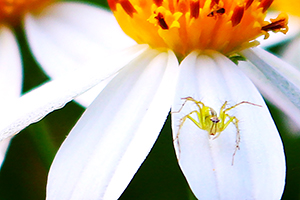20 Oct 20
Case at Toa Payoh Vets
"The guinea pig squealed loudly as he peed," the owner told me over the phone. He had consulted Vet 1 and wanted to know how many % of survival under anaesthetic I would offer to his guinea pig if he goes on the operating table.
Vet 1 had told the owner that the chances of surviving the anaesthetic is 15-30%. It is hard to be specific when the owner phoned me for a free consultation. There is a need to physically examine the guinea pig to give an assessment of the anaesthetic risk. "No need to X-ray again," I told him. "All anaesthesias have anaesthetic risks. The younger and healthier the guinea pig is, the lower the risks."
"How many operations have you performed on guinea pigs?" he asked.
"Not many as most Singapore guinea pigs do not have operations, unlike dogs and cats."
There are no guinea pig vet specialists in Singapore.
So, the skills will be similar as those acquired for stone removal of the dog and cat. The anatomy will be different and I have attached the relevant research notes in this matter. It is at:
Anatomy of urethra in the guinea pig
https://www.nature.com/articles/laban0707-20
In this case, I zoom onto the relevant area. There are two urinary stones, near the neck of the bladder/pelvic urethra junction. The glans penis is elongate in the guinea pig and is S-shaped. (see Anatomy below).
My approach will be:
1. Anaesthesia.
2. Catheter inside the urethra till the first curvative. Do not go further as there is another bend.
Leave catheter in. Retrograde flushing of the urethra to push the two urethral stones into the bladder.
3. Cystostomy to remove the stones.
-------------------------------------
Urethral catheterization can be used as a therapeutic technique in animals suffering from urethral tract calculi, which is a common clinical finding in guinea pigs1. While no clear sex predilection has been found2,3,4, middle-aged or older guinea pigs seem to have a higher incidence of the disease3. The majority of the calculi are composed of calcium carbonate and the etiopathogenesis is not known4. Calculi in the lower urinary tract (bladder, urethra) can cause hematuria, stranguria, and dysuria5. Urethral catheterization allows retrograde flushing, which may relieve the urethral obstruction by flushing calculi back into the bladder, where they can be removed surgically1.
Anatomy
The guinea pig penis is 's-shaped' (two curvatures). Starting from the glans penis, the distal end of the penis, it runs proximally to the level of the cranial border of the pubic symphysis. The penis is ∼40–55 mm long and 4–6 mm in greatest diameter9.
The elongate glans penis is shorter than the body and is formed by the distal end of the corpus spongiosus. The glans has the same diameter as the body and is cylindrical in shape. The end of the glans penis is a rounded tip covered with saw-toothed white scales or spurs, a unique feature of hystricomorph rodents (including guinea pigs, chinchillas, porcupines, and nutrias)10. The os penis is found within the entire length of the glans and measures ∼10 mm in length9,11.
The intromittent sac, another unique feature of hystricomorph rodents, is located within the ventral surface of the glans penis9, caudoventral to the external urethral opening12. It is a long cylindrical pouch, which opens as a wide transverse slit immediately below the urethral orifice. The intromittent sac everts during erection and two 3–5-mm keratinaceous styles, which are attached to the caudal end of the intromittent sac, become visible9.
The urethra in male guinea pigs is divided into the pelvic portion (pars pelvina) and the spongy portion (pars spongiosa). The spongy portion is ∼33–50 mm long and 3 mm in diameter. The external opening is the urethral orifice (ostium urethrae externum) at the tip of the penis on the dorsal surface. The spongy portion of the urethra follows the s-shaped curve of the penis and has a smooth internal lining. The pelvic portion is ∼15–25 mm long and 4 mm in diameter and has a predominately straight craniocaudal course. It extends from the urinary bladder neck through the pelvic canal to the penis. The internal lining is smooth, except for an area ∼5 mm caudal to the bladder neck, where the accessory gland ducts protrude into the urethral lumen, the colliculus seminalis9.
MORE DETAILS AT:
https://www.nature.com/articles/laban0707-20


























